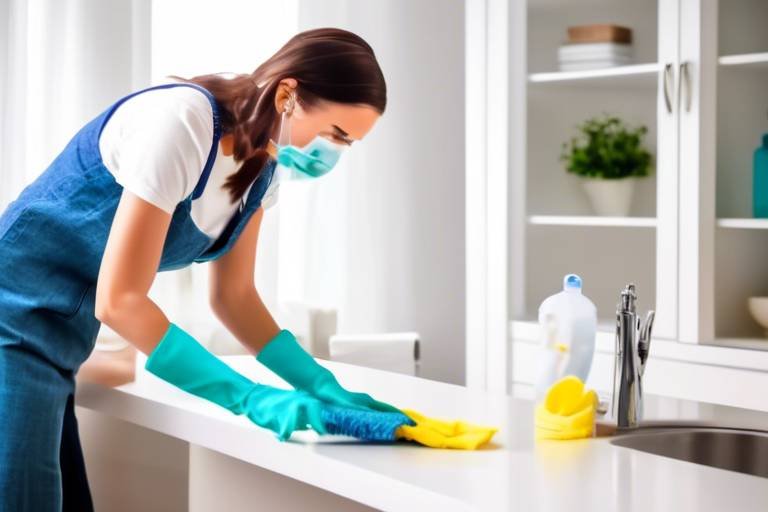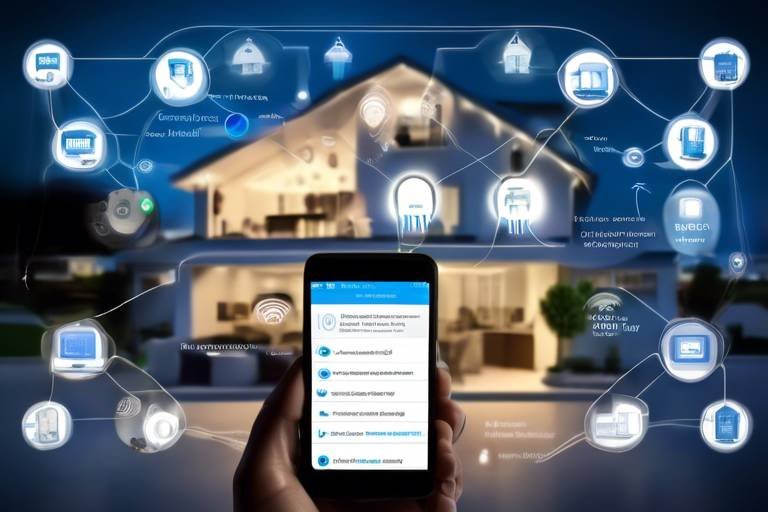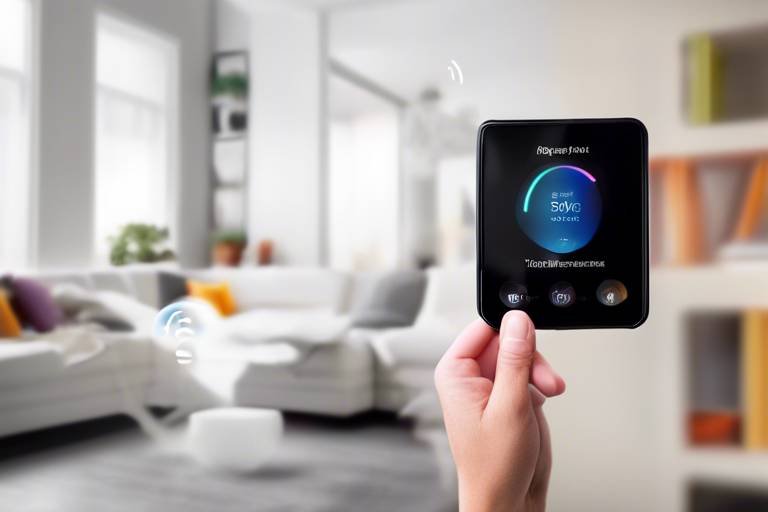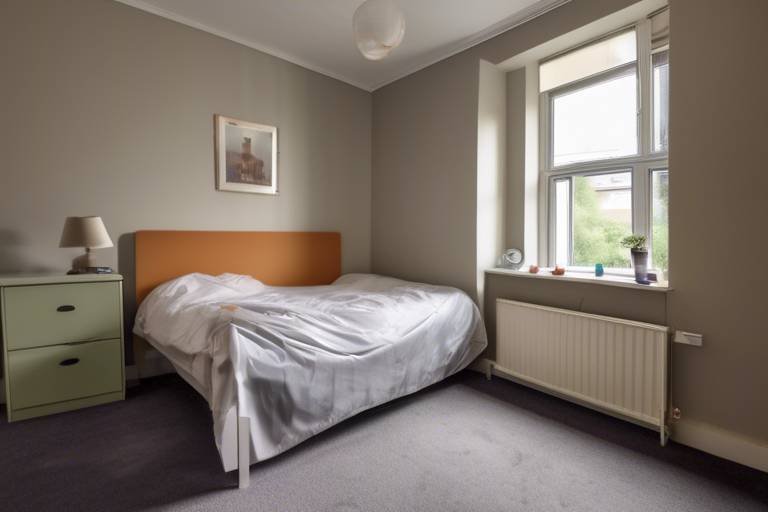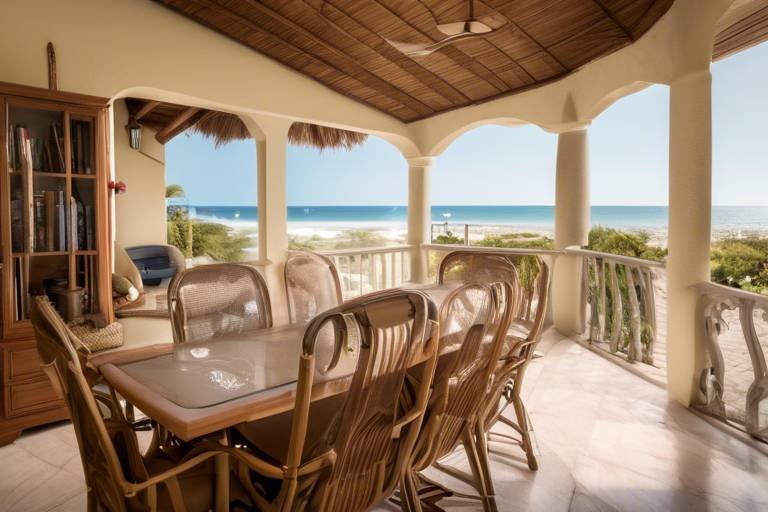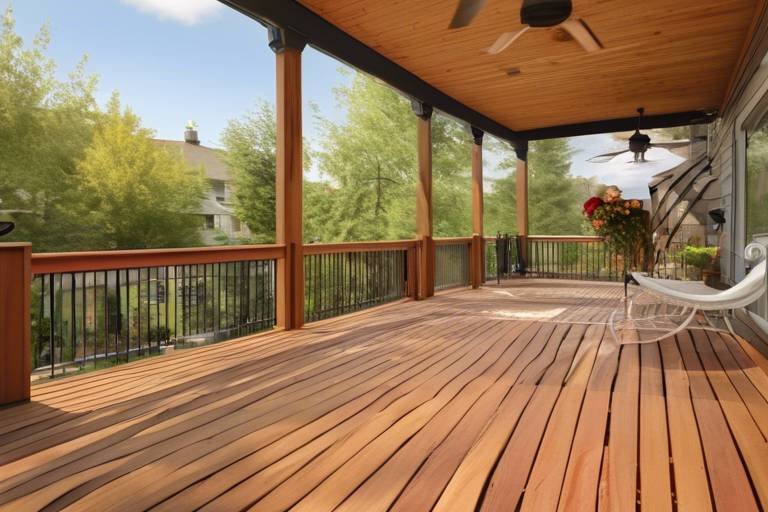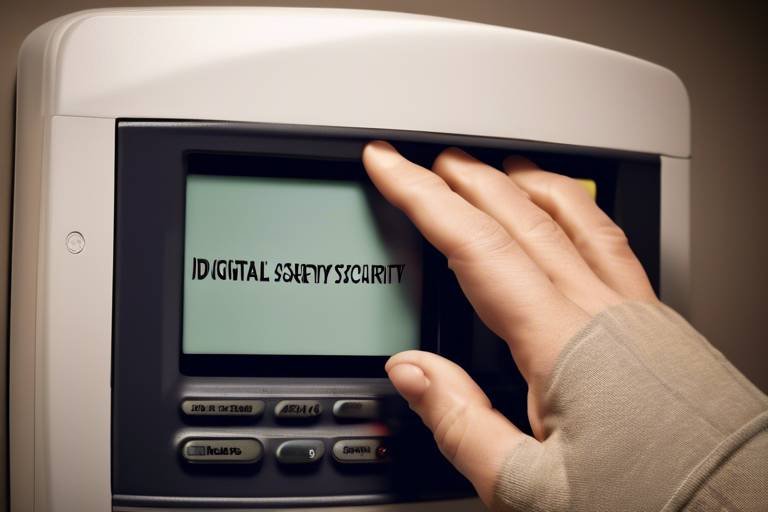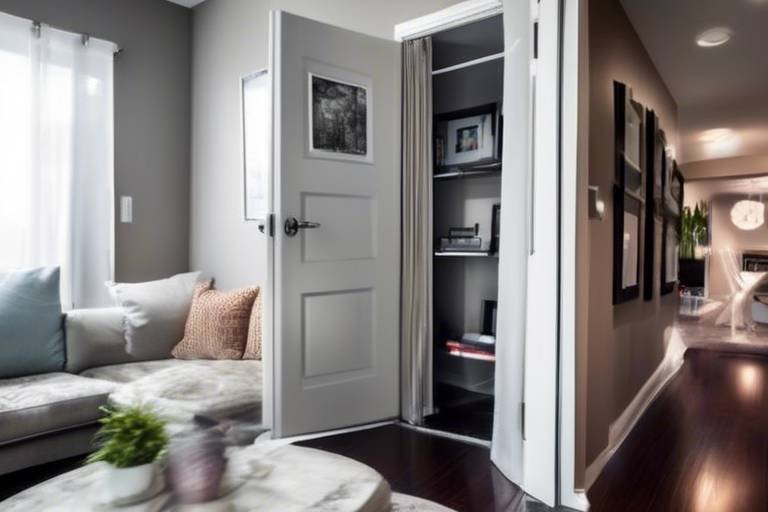The Importance of a Safe Home Environment for Seniors
Creating a safe home environment for seniors is not just about physical safety; it's about enhancing their overall quality of life. As our loved ones age, their needs evolve, and ensuring their home is a sanctuary is crucial. Imagine a space where they can thrive, feel secure, and maintain their independence. This article delves into the critical aspects of fostering such an environment, focusing on physical safety, emotional well-being, and practical solutions that can significantly impact their daily lives.
Every senior deserves to live in a place where they feel comfortable and protected. A safe home is more than just four walls; it’s a space that supports their physical limitations while promoting emotional health. It’s about understanding that the little things, like a well-placed grab bar or adequate lighting, can make a world of difference. We need to ask ourselves: How can we make their living space not only safe but also inviting? The answer lies in thoughtful modifications and a keen awareness of their unique needs.
In this article, we will explore common hazards that may lurk in the home, from slips and falls to kitchen accidents. By identifying these risks, we can implement effective strategies to mitigate them. Moreover, we will discuss how a safe environment can bolster emotional well-being, allowing seniors to maintain their social connections and independence. After all, a safe home is a happy home, and happiness is a vital ingredient for a fulfilling life.
Seniors have unique requirements that must be considered in their living spaces. Understanding these needs helps in designing an environment that promotes independence, safety, and comfort. As we age, our physical abilities may decline, but our desire for autonomy remains strong. Therefore, creating a home that caters to their changing abilities is essential. This involves not only making physical modifications but also ensuring that the home environment is emotionally supportive.
Identifying common hazards is essential for preventing accidents. This section discusses typical risks found in homes and how to mitigate them to ensure a safer living space. Many of these hazards are easily overlooked but can lead to serious injuries. By being proactive, we can create a safer environment for our seniors. Here are some common hazards to watch out for:
- Slips and Falls
- Fire Hazards
- Kitchen Accidents
- Inadequate Lighting
Slips and falls are among the leading causes of injury for seniors. The risk of falling increases significantly with age, making it imperative to take preventive measures. This subsection provides insights into preventing these accidents through home modifications and awareness. Simple changes, like removing loose rugs, ensuring proper footwear, and installing handrails, can significantly reduce the risk of falls.
The bathroom can be particularly hazardous for seniors. This part outlines essential safety measures, such as grab bars and non-slip mats, to reduce the risk of falls. Consider installing a shower chair or a handheld showerhead to make bathing easier and safer. These small adjustments can transform a daunting task into a manageable one.
The kitchen poses unique dangers, including burns and cuts. This section highlights practical tips for making the kitchen safer for seniors while maintaining functionality. Keeping frequently used items within reach, using non-slip mats, and ensuring proper lighting can help prevent accidents. Additionally, consider using appliances designed for ease of use, such as electric can openers or microwave ovens with easy-to-read buttons.
Fire safety is crucial in any home. This subsection addresses the importance of smoke detectors, fire extinguishers, and creating an emergency plan tailored to seniors. Regularly checking smoke detectors and having a fire escape plan can be lifesaving. It’s essential to ensure that seniors know how to use a fire extinguisher and understand the importance of staying calm in emergencies.
A safe home environment significantly impacts seniors' emotional health. This section explores how safety and comfort contribute to overall well-being and mental health. When seniors feel secure in their surroundings, they are more likely to engage in social activities and maintain their independence. A home that fosters emotional well-being is one where they can express themselves freely, entertain friends, and feel a sense of belonging.
Maintaining social connections is vital for seniors' emotional health. A safe home can foster relationships and community engagement. Encourage family visits, host gatherings, or simply create a cozy space for friends to drop by. The more social interactions they have, the less likely they are to experience feelings of isolation or depression.
Promoting independence is essential for seniors' self-esteem. This subsection examines how a safe environment supports autonomy while ensuring necessary assistance is available. Allowing seniors to make choices about their living space can empower them. Whether it's choosing their décor or deciding on daily activities, autonomy plays a significant role in their happiness.
Q1: What are the most common safety hazards for seniors at home?
A: Common hazards include slips and falls, kitchen accidents, inadequate lighting, and fire hazards.
Q2: How can I make my home safer for my elderly parents?
A: Consider installing grab bars, removing tripping hazards, ensuring good lighting, and having emergency plans in place.
Q3: Why is emotional well-being important for seniors?
A: Emotional well-being impacts their overall health, social connections, and quality of life, making it crucial for a fulfilling life.

Understanding Senior Needs
Seniors have unique requirements that must be considered in their living spaces. As we age, our bodies undergo various changes, which can affect mobility, vision, and cognitive abilities. These changes necessitate a thoughtful approach to creating a home environment that not only promotes independence but also ensures comfort and safety.
One of the primary needs of seniors is the ability to navigate their homes with ease. This often means that common household items should be easily accessible. For instance, placing frequently used items within reach can help prevent unnecessary strain or accidents. Additionally, the layout of the home should allow for smooth movement, minimizing the risk of tripping over furniture or other obstacles.
Another critical aspect is the need for emotional support. A safe home environment can significantly impact a senior's mental health. Many seniors experience feelings of isolation or loneliness, especially if they live alone. Therefore, creating spaces that encourage social interaction—such as a cozy living room or a well-lit dining area—can foster connections with family and friends, ultimately enhancing their emotional well-being.
Moreover, it's essential to consider the role of technology in a senior's life. With advancements in smart home technology, seniors can benefit from tools that enhance their safety and independence. For example, voice-activated devices can assist in controlling lights or making phone calls without the need to move around too much. These innovations not only provide convenience but can also significantly reduce the risk of accidents.
To summarize, understanding the needs of seniors involves a holistic approach that encompasses physical safety, emotional well-being, and the integration of technology. By addressing these aspects, we can create a nurturing environment that allows seniors to thrive. Here’s a brief overview of the key needs:
| Need | Description |
|---|---|
| Physical Safety | Ensuring easy navigation and accessibility within the home to prevent accidents. |
| Emotional Support | Creating spaces that encourage social interaction and reduce feelings of isolation. |
| Technology Integration | Utilizing smart home devices to enhance safety and independence. |
By focusing on these essential needs, we can help seniors maintain their quality of life and foster an environment where they feel secure and valued.
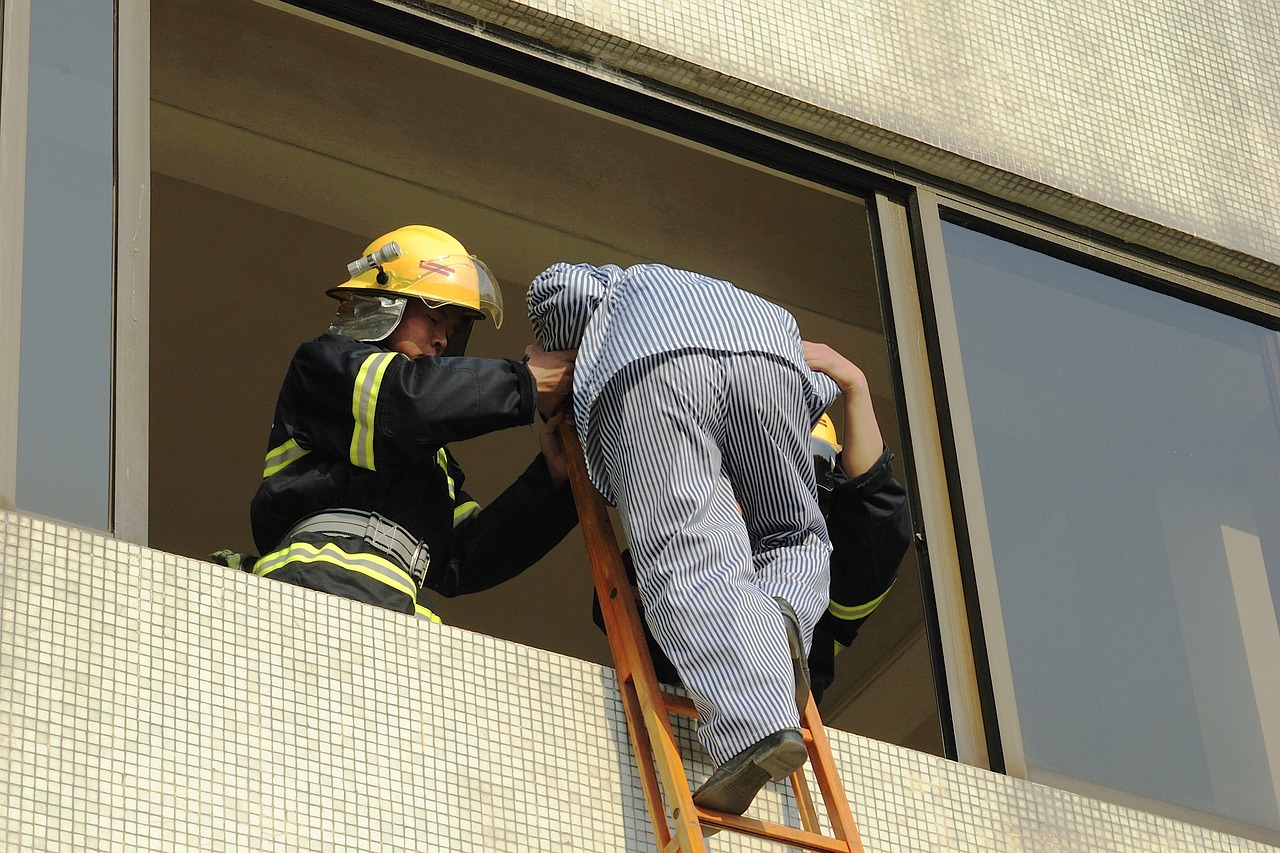
Common Hazards in the Home
When it comes to creating a safe haven for our beloved seniors, understanding the common hazards lurking in the home is absolutely crucial. Every corner can present a risk, and it’s essential to identify these dangers to mitigate them effectively. From slippery floors to cluttered pathways, a seemingly ordinary home can transform into a minefield of potential accidents. Have you ever thought about how something as simple as a loose rug could lead to a serious fall? Or how the placement of furniture can impact mobility? These are just a few of the considerations we must keep in mind.
One of the most alarming statistics is that slips and falls account for a significant percentage of injuries among seniors. In fact, the Centers for Disease Control and Prevention (CDC) reports that one in four older adults falls each year. This is a staggering number, and it highlights the urgent need for preventive measures. To tackle this issue, let’s dive into some of the most prevalent hazards found in homes and explore practical solutions to enhance safety.
Slips and falls can happen in the blink of an eye, often leading to severe injuries. Picture this: a senior rushing to answer the door, their feet catching on a loose carpet edge. The result? A painful tumble that could lead to broken bones or worse. To prevent such accidents, it’s vital to implement some simple home modifications. For instance, securing rugs with non-slip backing or removing them altogether can significantly reduce the risk. Additionally, ensuring that walkways are clear of clutter and well-lit can make a world of difference.
The bathroom is a hotspot for accidents, primarily due to wet surfaces and the presence of various fixtures. It’s essential to equip this space with safety measures that can prevent falls. Installing grab bars near the toilet and in the shower can provide seniors with the support they need. Non-slip mats are also a must-have to prevent slipping on wet floors. Let’s not forget about the importance of adequate lighting; a well-lit bathroom can help seniors navigate safely, even during the night.
The kitchen, while being the heart of the home, can also be a dangerous place for seniors. Imagine a senior preparing a meal, only to accidentally cut themselves or suffer a burn from a hot stove. To make this area safer, consider the following tips:
- Use non-slip mats in front of the sink and stove.
- Keep frequently used items within easy reach to avoid straining.
- Install a fire extinguisher and ensure it's easily accessible.
By making these small adjustments, we can create a kitchen that is not only functional but also safe for our elderly loved ones.
Fire safety is another critical aspect of home safety that cannot be overlooked. With seniors often being less mobile, having a solid fire safety plan is essential. Ensure that smoke detectors are installed in every room and that they are functioning properly. It’s also a good idea to have a fire extinguisher readily available, especially in the kitchen. Creating an emergency escape plan that is easy to follow can make a significant difference in a crisis. Remember, preparation is key!
In summary, identifying common hazards in the home is the first step toward creating a safer environment for seniors. By addressing issues like slips and falls, bathroom safety, kitchen hazards, and fire safety, we can significantly reduce the risk of accidents. Every little adjustment contributes to a safer living space, allowing our seniors to enjoy their independence while staying protected.
Q: What are the most common hazards for seniors at home?
A: The most common hazards include slips and falls, kitchen accidents, and fire risks. It’s important to address these issues to enhance safety.
Q: How can I make my bathroom safer for seniors?
A: Install grab bars, use non-slip mats, and ensure good lighting to prevent falls and injuries.
Q: What should I do if a senior falls at home?
A: Ensure they are safe and comfortable, check for injuries, and seek medical attention if necessary. It’s also important to assess the environment to prevent future falls.
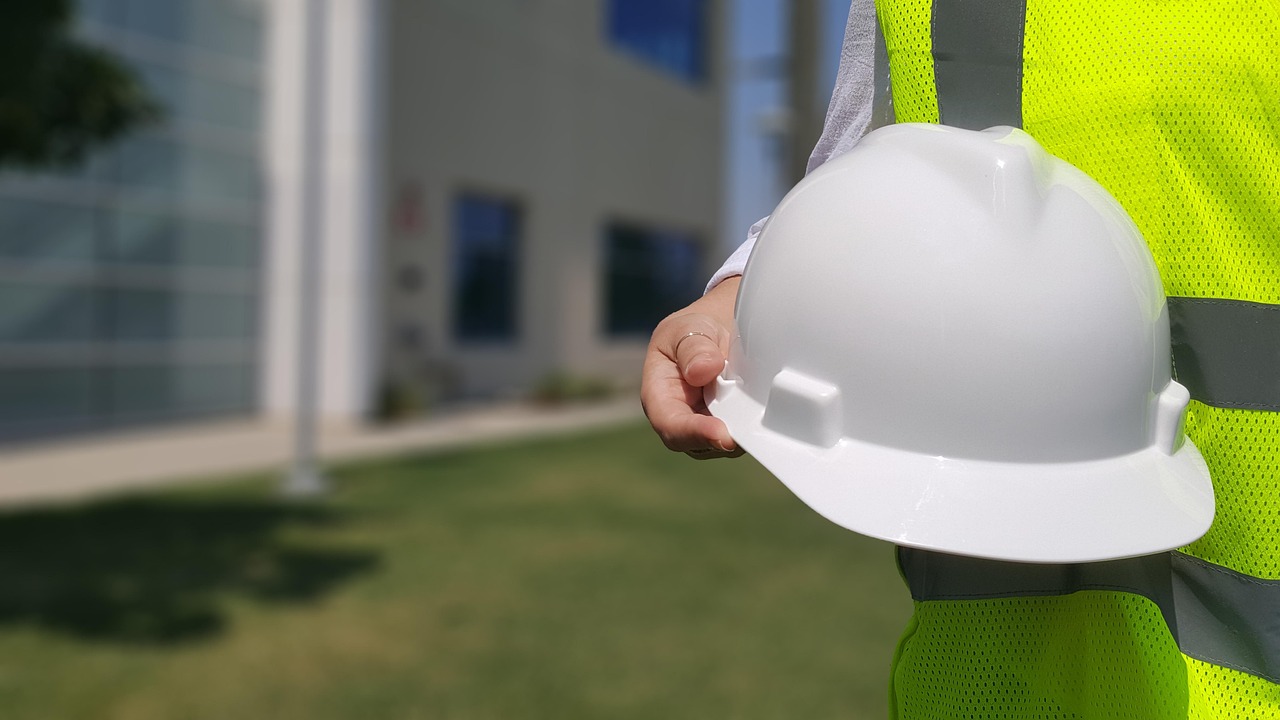
Slips and Falls
Slips and falls pose a significant threat to seniors, often leading to serious injuries that can drastically affect their quality of life. These accidents can occur in various areas of the home, such as the living room, kitchen, and especially the bathroom. Imagine a senior navigating their home, feeling confident until a small rug or a wet floor suddenly turns their day upside down. It's essential to recognize that even minor hazards can lead to major consequences.
To effectively combat the risk of slips and falls, we must first understand the common causes. Poor lighting, uneven flooring, and cluttered walkways are just a few culprits that can lead to dangerous situations. It's like trying to walk through a maze blindfolded; without proper visibility and clear pathways, the chances of stumbling increase significantly. Therefore, enhancing visibility and maintaining a tidy environment are crucial steps in creating a safer home.
One of the most effective ways to prevent slips and falls is through home modifications. Here are some practical recommendations:
- Install grab bars: Placing grab bars in strategic locations, such as near staircases and in the bathroom, provides seniors with support when they need it most.
- Use non-slip mats: Non-slip mats in the bathroom and kitchen can significantly reduce the risk of slips on wet surfaces.
- Improve lighting: Brightening up hallways and rooms with adequate lighting can help seniors navigate their homes more safely.
- Clear pathways: Keeping walkways free of clutter, including electrical cords and decorative items, ensures that seniors can move around without obstacles.
Moreover, it’s essential to educate seniors about their surroundings. Awareness is a powerful tool; by understanding where potential hazards lie, they can take proactive steps to avoid them. For instance, using a cane or walker can provide additional stability when moving around the house, especially on slippery surfaces. Just as you wouldn't drive a car without wearing a seatbelt, seniors should approach their homes with the same level of caution.
In summary, preventing slips and falls in the home is a multifaceted approach that includes modifying the environment, enhancing awareness, and providing support. By taking these proactive measures, we can create a safe haven for seniors, allowing them to maintain their independence and enjoy their golden years without the constant fear of falling. Remember, a safe home is a happy home!
Q1: What are the most common causes of slips and falls at home?
A1: The most common causes include poor lighting, wet or uneven floors, cluttered walkways, and lack of support features like grab bars.
Q2: How can I make my bathroom safer for seniors?
A2: You can install grab bars, use non-slip mats, and ensure adequate lighting to enhance safety in the bathroom.
Q3: Are there specific tools or devices that can help prevent falls?
A3: Yes, tools such as canes, walkers, and non-slip footwear can significantly help seniors maintain balance and stability.
Q4: How can I encourage my elderly loved ones to be more aware of their surroundings?
A4: Regular conversations about safety, providing visual reminders, and encouraging them to take their time when moving around can help increase awareness.
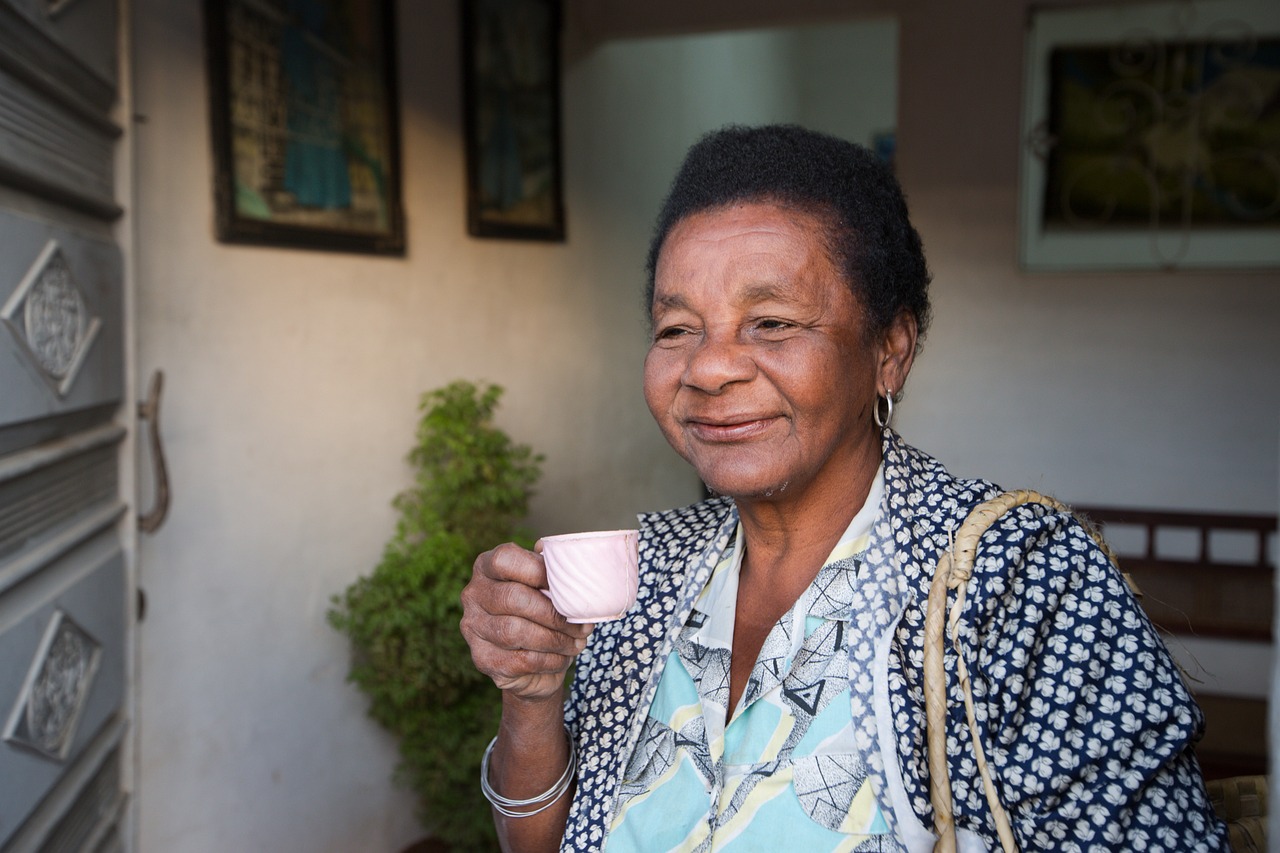
Bathroom Safety Measures
When it comes to ensuring the safety of seniors in their homes, the bathroom often stands out as a potential danger zone. With its slippery surfaces and hard edges, it can be a recipe for accidents if not properly equipped. To create a safer bathroom environment, it’s essential to implement several practical measures that can significantly reduce the risk of falls and injuries. One of the first steps is to install grab bars near the toilet and inside the shower or bathtub. These sturdy bars provide seniors with something to hold onto while navigating these slippery areas, offering stability and confidence.
In addition to grab bars, consider adding non-slip mats both inside and outside the shower or tub. These mats can prevent slipping on wet surfaces, which is a common cause of falls. Furthermore, it’s wise to keep the bathroom well-lit, especially during the night. Installing night lights can help seniors navigate the space safely without the risk of tripping over unseen obstacles.
Another vital aspect of bathroom safety is the use of a shower chair. For seniors who may struggle with balance or endurance, a shower chair allows them to sit while bathing, reducing the risk of falls. Additionally, a handheld showerhead can provide ease of use, allowing seniors to wash themselves comfortably while seated. It's also important to keep essential items within easy reach to minimize stretching or bending, which can lead to loss of balance.
Lastly, consider the temperature of the water. Installing a thermostatic mixing valve can help prevent scalding by regulating the water temperature, ensuring that it doesn’t get too hot. This simple addition not only enhances safety but also provides peace of mind for both seniors and their caregivers.
By taking these steps—installing grab bars, using non-slip mats, ensuring good lighting, providing shower chairs, and regulating water temperature—you can transform the bathroom into a safer haven for seniors. This proactive approach not only protects against physical injuries but also fosters a sense of independence and confidence, allowing seniors to maintain their dignity while navigating their daily routines.

Kitchen Safety Tips
The kitchen is often considered the heart of the home, but for seniors, it can also be a place fraught with danger. Cooking should be a joyful experience, not a source of anxiety or risk. Therefore, it's essential to implement that can significantly reduce hazards while allowing seniors to enjoy their culinary adventures. One of the first things to consider is the layout of the kitchen. Is it cluttered? Are frequently used items within easy reach? A well-organized kitchen can minimize the risk of accidents.
Start by ensuring that all essential items, such as pots, pans, and utensils, are stored at waist height. This reduces the need for seniors to reach up high or bend down low, both of which can lead to falls. Additionally, consider using non-slip mats to provide better grip on the floor, especially if spills occur. A clean and tidy kitchen is vital; it not only looks inviting but also prevents tripping hazards.
Another critical aspect is the use of appropriate tools and equipment. For instance, knives should be sharp enough to cut through food easily, as dull knives can lead to accidents when too much pressure is applied. Moreover, investing in ergonomic kitchen tools can make cooking easier and safer. These tools are designed to minimize strain on the hands and wrists, making them perfect for seniors who may have arthritis or other mobility issues.
It's also essential to be mindful of the cooking process itself. Here are some practical tips to enhance kitchen safety:
- Always use pot holders or oven mitts when handling hot cookware to prevent burns.
- Keep a fire extinguisher within reach and ensure it's easily accessible.
- Never leave cooking unattended, especially when using oil, as it can ignite quickly.
- Label all food containers clearly to avoid confusion, especially with medications that may resemble food items.
In addition to these tips, consider the importance of proper lighting. Good lighting can make a world of difference in preventing accidents. Make sure the kitchen is well-lit, especially over work areas like the stove and countertops. Installing under-cabinet lighting can illuminate dark corners and help seniors see what they are doing more clearly.
Lastly, technology can also play a role in kitchen safety. Smart appliances that can be controlled via voice command or mobile apps can make cooking easier and safer. For example, a smart oven can alert users when the cooking time is up, reducing the risk of burnt food and potential fires.
By implementing these , seniors can enjoy their time in the kitchen with confidence and peace of mind. A safe kitchen not only promotes independence but also allows for the joy of cooking and sharing meals with loved ones. So let’s make the kitchen a safe haven where delicious meals and cherished memories are created!
Q: What are some common kitchen hazards for seniors?
A: Common hazards include slips and falls due to spills, burns from hot surfaces, and cuts from sharp utensils. Ensuring proper organization and using safety equipment can help mitigate these risks.
Q: How can I make my kitchen more accessible for seniors?
A: Store frequently used items at waist height, use ergonomic tools, and ensure the kitchen is well-lit to improve visibility and accessibility.
Q: Are there any specific tools recommended for seniors?
A: Yes, ergonomic kitchen tools such as easy-grip knives, jar openers, and non-slip mats are highly recommended to reduce strain and enhance safety.
Q: What should I do in case of a kitchen fire?
A: Keep a fire extinguisher handy, never leave cooking unattended, and have an emergency plan in place to ensure safety.

Fire Safety Precautions
When it comes to ensuring a safe home environment for seniors, fire safety is an aspect that simply cannot be overlooked. The reality is that fires can happen in the blink of an eye, and for seniors, the consequences can be devastating. Implementing effective fire safety precautions is essential not only to protect their physical safety but also to give them peace of mind. So, what can we do to create a fire-safe haven for our elderly loved ones?
First and foremost, installing smoke detectors is a crucial step. These devices are the frontline defense against fire hazards, alerting residents to smoke or flames before they become uncontrollable. It's recommended to place smoke detectors in every bedroom, outside sleeping areas, and on every level of the home. Regularly testing these alarms and replacing batteries at least twice a year can ensure they are functioning correctly. Did you know that many modern smoke detectors come with a voice alert feature? This can be particularly beneficial for seniors, as the clear, spoken warnings can be more effective than traditional beeping alarms.
Next on the list is having fire extinguishers readily available. A fire extinguisher can be a lifesaver, but it’s important to ensure that seniors know how to use them. Consider placing extinguishers in easily accessible locations, such as the kitchen and near any heat sources. Providing a brief training session or a demonstration can empower seniors to act quickly in case of a fire. Remember, however, that if a fire is too large to handle, it’s always best to evacuate and call for help.
Creating an emergency plan tailored specifically for seniors is another vital precaution. This plan should outline escape routes, meeting points, and contact information for emergency services. It’s not just about having a plan; it’s about ensuring that everyone in the household understands it and can execute it swiftly. Regularly practicing this plan can help familiarize seniors with the steps they need to take in case of an emergency. Consider using visual aids or diagrams to make the plan easy to understand.
Lastly, it’s essential to be mindful of common fire hazards that may exist within the home. For instance, seniors should be cautious with candles, cooking appliances, and electrical cords. Encourage them to use flameless candles instead of traditional ones and to keep flammable materials away from heat sources. It’s also wise to regularly inspect electrical cords for fraying or damage, as these can pose significant fire risks.
In conclusion, creating a fire-safe environment for seniors requires a proactive approach. By installing smoke detectors, having fire extinguishers, developing an emergency plan, and being aware of potential hazards, we can significantly reduce the risk of fire-related incidents. Remember, safety is a shared responsibility, and by taking these precautions, we can help our loved ones live with confidence and security in their own homes.
- What should I do if a smoke detector goes off?
If a smoke detector goes off, assess the situation immediately. If there is smoke or fire, evacuate the premises and call emergency services. If it’s a false alarm, check the detector for dust or debris and reset it.
- How often should I replace smoke detectors?
Smoke detectors should be replaced every 10 years. Regular testing and battery replacement should also be done twice a year.
- What type of fire extinguisher is best for home use?
A multi-purpose fire extinguisher labeled as “ABC” is suitable for most household fires, including those caused by wood, paper, and flammable liquids.
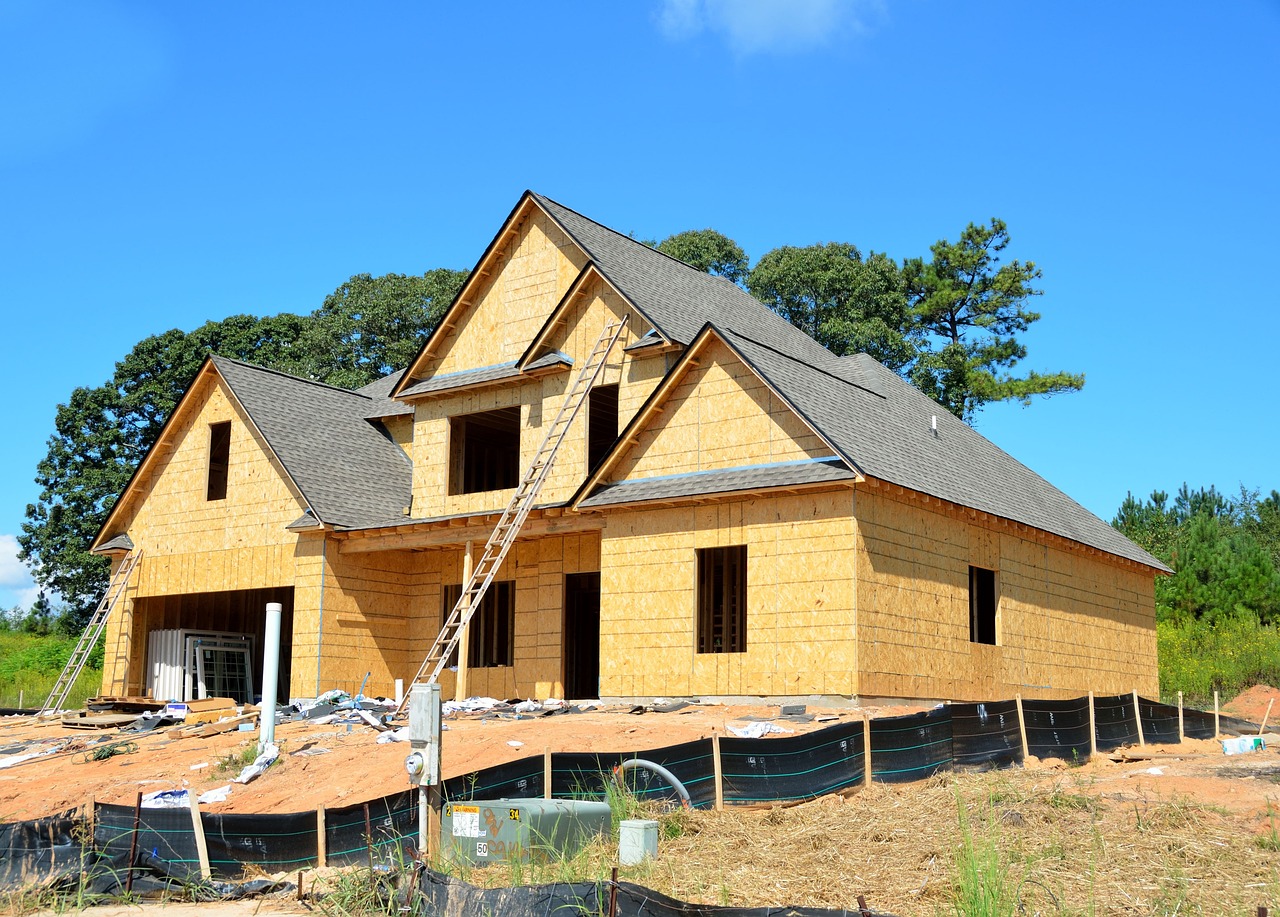
Emotional Well-being in a Safe Environment
When we think about a safe home for seniors, we often focus on physical safety—like preventing falls or avoiding kitchen accidents. However, we can't overlook the importance of emotional well-being. A secure environment does wonders for a senior's mental health, offering them a sense of stability and comfort. Imagine living in a space where you feel safe, where every corner is designed to support your independence and ease your worries. This feeling of security can lead to improved mood, reduced anxiety, and a greater sense of purpose in daily life.
In a safe home, seniors are more likely to engage in activities that bring them joy, whether it's tending to a garden, enjoying a favorite hobby, or simply spending time with family and friends. This engagement is crucial because social connections play a vital role in emotional health. When a senior feels secure in their home, they are more inclined to invite loved ones over or participate in community events, fostering relationships that are essential for emotional support. Think of it this way: a home that feels safe is like a warm hug, inviting seniors to open up and connect with the world around them.
Moreover, a safe environment promotes independence and autonomy. When seniors know they can move around without the fear of accidents, they are more likely to take charge of their daily routines. This independence boosts their self-esteem and helps them maintain a sense of control over their lives. Imagine being able to prepare your meals, manage your medications, or even engage in light exercise without constant worry. It’s empowering! In fact, many seniors find that having a safe space allows them to embrace their hobbies and passions, leading to a richer, more fulfilling life.
To illustrate the connection between a safe home and emotional well-being, consider the following table that highlights key elements of a supportive environment:
| Element | Impact on Emotional Well-being |
|---|---|
| Safe Mobility | Encourages independence and reduces anxiety about falls. |
| Social Spaces | Fosters connections with family and friends, combating loneliness. |
| Personalized Decor | Creates a sense of ownership and belonging, enhancing comfort. |
| Accessible Amenities | Promotes self-sufficiency, leading to increased self-esteem. |
In conclusion, the emotional well-being of seniors is intricately linked to their home environment. A safe, comfortable, and inviting space not only protects them physically but also nurtures their mental health. As caregivers and family members, it's essential to recognize the profound impact that a secure home has on a senior's overall happiness and quality of life. By prioritizing their emotional needs alongside physical safety, we can create a holistic environment that truly supports their golden years.
- What are some signs that a senior may not feel safe in their home?
Look for signs of anxiety, reluctance to move around the house, or frequent requests for assistance. - How can I help improve my senior loved one's emotional well-being?
Encourage social interactions, create a comfortable living space, and ensure they have access to activities they enjoy. - What modifications can be made to enhance safety and emotional well-being?
Consider installing grab bars, improving lighting, decluttering spaces, and personalizing their environment with familiar items.
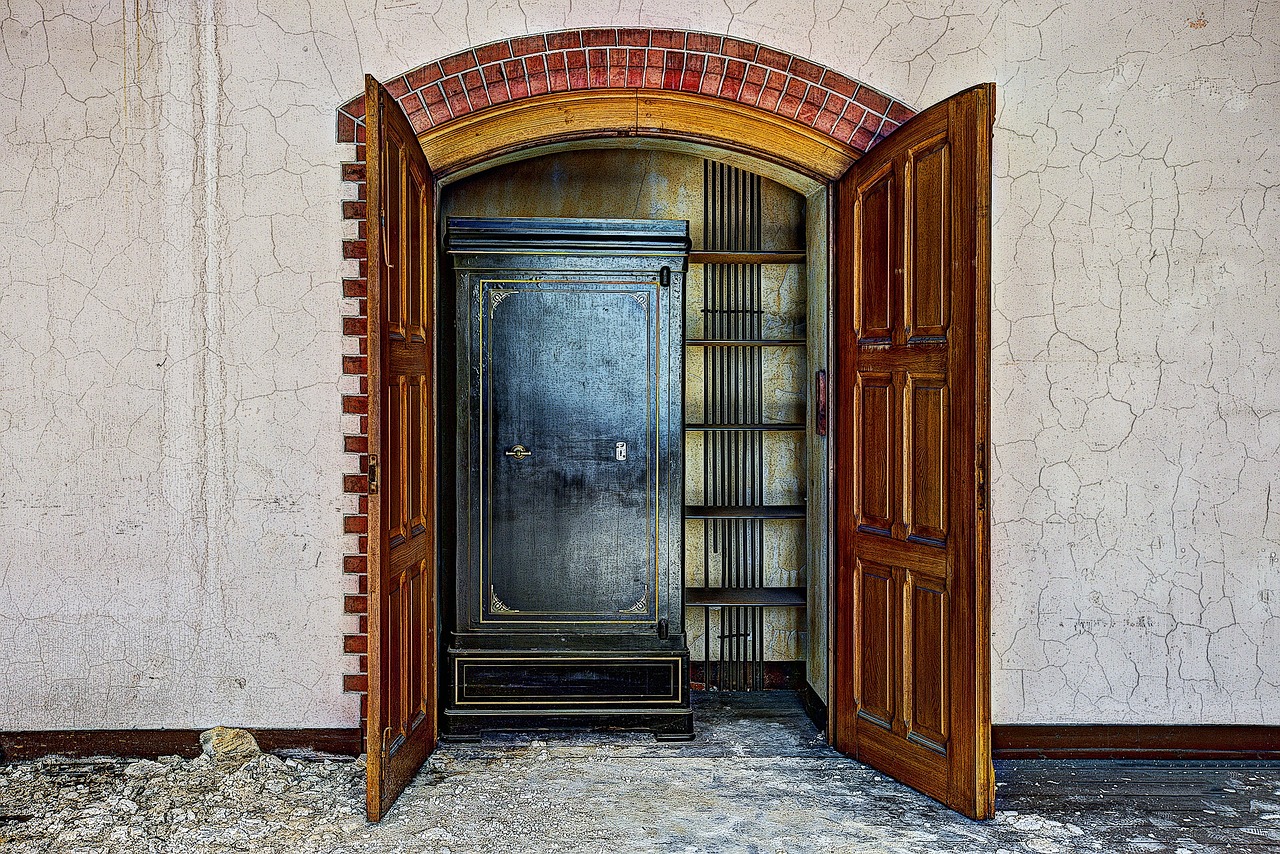
Social Connections
Maintaining is not just a luxury for seniors; it's a vital component of their emotional health. Imagine living in a world where your social interactions are limited, and the only voices you hear are those of your own thoughts. Sounds isolating, right? For many seniors, this is a daily reality. A safe home environment can significantly influence their ability to stay connected with family, friends, and the community. When seniors feel safe and secure in their homes, they are more likely to engage in activities that foster relationships.
Creating opportunities for social interaction can be as simple as arranging comfortable seating in common areas or ensuring that pathways are clear for easy movement. It's essential to consider the layout of the home. For instance, a well-lit living room that invites conversation can encourage family visits, while a cozy dining area can become the backdrop for shared meals and laughter.
Moreover, technology has become a powerful tool for enhancing social connections among seniors. With the rise of video calling platforms, seniors can easily reach out to loved ones, no matter the distance. However, this requires a safe environment where they can comfortably use these technologies. Ensuring that devices are accessible and that there is adequate training on how to use them can bridge the gap between isolation and connection.
Here are some practical tips to enhance social connections for seniors:
- Regular Visits: Encourage family members to schedule regular visits, which can provide both emotional support and companionship.
- Community Engagement: Facilitate participation in local community events or clubs, which can help seniors meet new friends and engage in social activities.
- Technology Training: Offer training sessions on how to use smartphones, tablets, or computers, enabling seniors to connect with friends and family online.
In addition to these strategies, fostering a sense of community within the neighborhood can also make a world of difference. When seniors feel like they belong to a network of support, their emotional well-being flourishes. This sense of belonging can be nurtured through community events, volunteer opportunities, or even casual get-togethers in shared spaces. The more they interact with others, the less likely they are to feel lonely or depressed.
Ultimately, a safe home environment not only protects seniors physically but also opens the door to countless social opportunities. By prioritizing their safety and comfort, we can help them cultivate rich, fulfilling relationships that enhance their quality of life. Remember, it's not just about keeping them safe; it's about keeping them connected.
Q: How can I help my elderly parent maintain social connections?
A: You can encourage regular visits from family and friends, help them join community groups, and teach them to use technology for video calls.
Q: What are some signs that my elderly loved one is feeling isolated?
A: Look for changes in mood, decreased interest in activities they once enjoyed, or a noticeable decline in communication with family and friends.
Q: Are there community resources available for seniors to connect with others?
A: Yes, many communities offer senior centers, clubs, and volunteer opportunities specifically designed to help seniors engage socially.
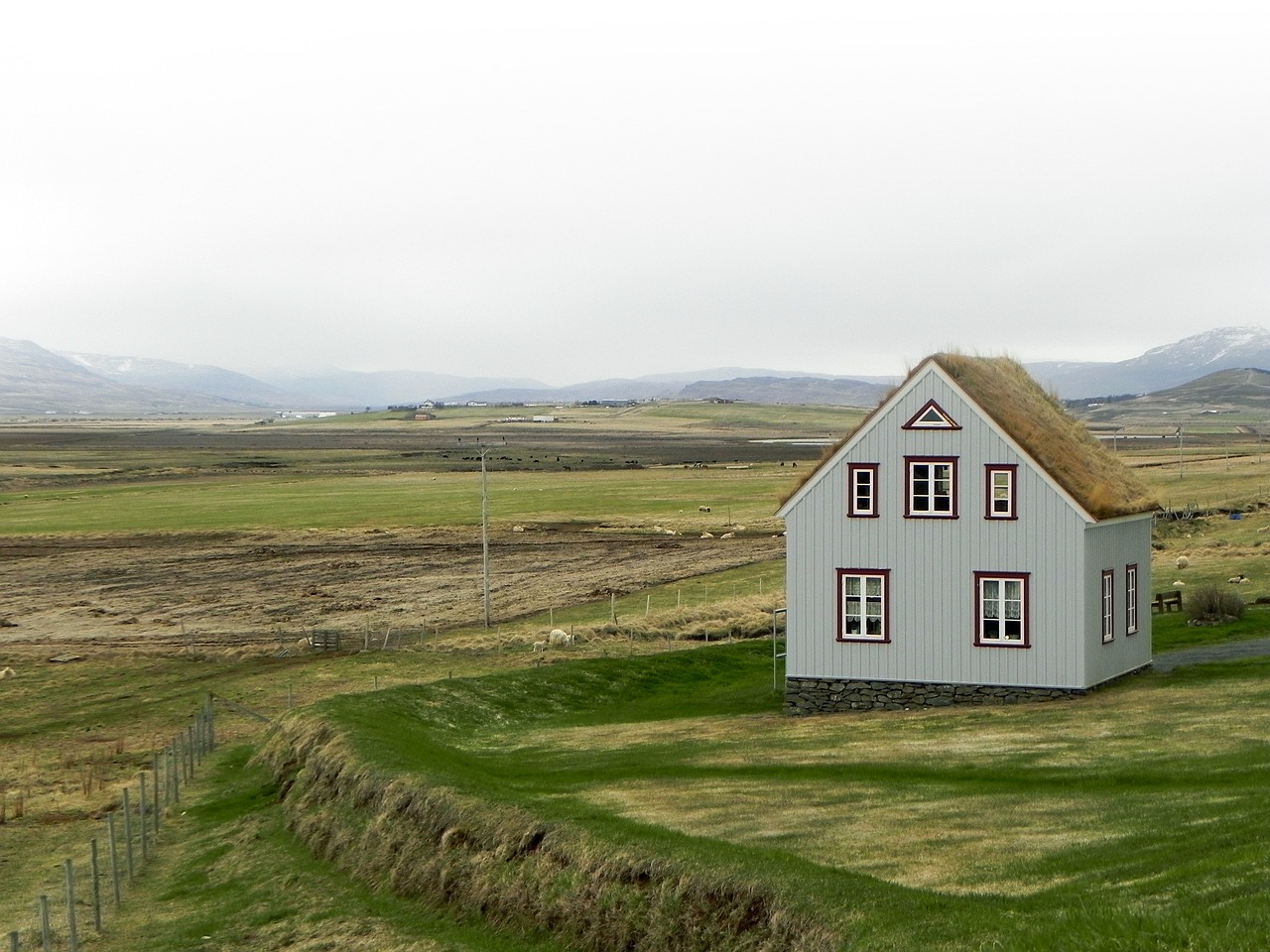
Independence and Autonomy
Independence and autonomy are not just buzzwords; they are essential ingredients for a fulfilling life, especially for seniors. Imagine waking up every day in a space that not only accommodates your needs but also empowers you to make choices. This is what a safe home environment can provide. It’s like having a sturdy bridge that enables you to cross the river of life with confidence, rather than a rickety old plank that leaves you feeling uncertain and vulnerable.
Creating a safe home is akin to crafting a personalized sanctuary where seniors can thrive. When they feel secure in their surroundings, they are more likely to engage in activities that promote their well-being. For instance, a well-lit living room can encourage them to read or enjoy hobbies that stimulate their minds. The key is to strike a balance between freedom and support. Just like a bird needs both the strength of its wings and the safety of its nest, seniors require the ability to explore their independence while knowing help is available if needed.
To enhance independence, consider implementing some practical modifications around the home. Simple changes can make a world of difference. For example, installing lever-style door handles rather than traditional knobs can make it easier for seniors with arthritis to open doors. Additionally, ensuring that frequently used items are within easy reach can reduce the need for risky climbing or stretching. These adjustments not only promote safety but also foster a sense of autonomy, allowing seniors to navigate their spaces with ease.
Moreover, it’s essential to recognize the emotional aspect of independence. When seniors are given opportunities to make decisions about their daily routines, it boosts their self-esteem and reinforces their sense of identity. Think about it: when was the last time you felt truly empowered? For seniors, the ability to choose what to wear, what to eat, or even what time to go to bed can significantly impact their overall happiness. It’s these little victories that contribute to a greater sense of control over their lives.
In fostering independence, we must also consider the role of technology. Smart home devices can be a game changer. Imagine a voice-activated assistant that can turn on lights, play music, or even remind them to take their medication. This technology can provide an extra layer of support, enabling seniors to maintain their autonomy while ensuring they have assistance at their fingertips. It’s like having a reliable companion who is always there, ready to lend a helping hand without intruding on their independence.
In conclusion, creating a safe home environment that promotes independence and autonomy for seniors is not just about physical modifications; it’s about nurturing their spirit and dignity. By making thoughtful changes and embracing technology, we can empower them to live their lives to the fullest. After all, a safe home is not just a place to live; it’s a foundation for a vibrant and independent life.
- What are some common modifications to enhance safety for seniors?
Common modifications include installing grab bars in bathrooms, using non-slip mats, and ensuring good lighting throughout the home. - How can technology help seniors maintain independence?
Technology like smart home devices can assist seniors in managing daily tasks, such as reminders for medications or controlling home appliances with voice commands. - Why is emotional well-being important for seniors?
Emotional well-being is crucial as it helps seniors maintain a positive outlook on life, which can significantly impact their physical health and overall quality of life. - What role do social connections play in a senior's life?
Social connections help combat loneliness and isolation, providing emotional support and fostering a sense of community, which is vital for mental health.
Frequently Asked Questions
- What are the most common hazards in a senior's home?
Common hazards include slips and falls, especially in areas like bathrooms and kitchens. Other risks involve fire hazards, clutter, inadequate lighting, and the presence of sharp objects or hot surfaces. Identifying these hazards is crucial for ensuring a safe living environment.
- How can I prevent slips and falls in my home?
To prevent slips and falls, consider making home modifications such as installing grab bars in the bathroom, using non-slip mats, and ensuring that all areas are well-lit. Keeping floors clear of clutter and using sturdy furniture for support can also help reduce the risk.
- What specific safety measures should I implement in the bathroom?
Essential safety measures for the bathroom include installing grab bars near the toilet and in the shower, using non-slip mats, and ensuring that the water temperature is regulated to prevent burns. Additionally, consider using a shower chair for added stability.
- What kitchen safety tips should I follow for seniors?
In the kitchen, it's important to keep frequently used items within easy reach to avoid stretching or climbing. Use non-slip mats, ensure proper lighting, and consider adaptive tools that can help seniors with limited mobility. Always keep a fire extinguisher handy and maintain a clutter-free workspace.
- How can I enhance fire safety in a senior's home?
Enhancing fire safety involves installing smoke detectors on every level of the home and testing them monthly. It's also wise to have a fire extinguisher accessible in the kitchen and to create a clear emergency escape plan that includes all family members.
- Why is emotional well-being important for seniors?
Emotional well-being is crucial for seniors as it greatly affects their overall health. A safe and comfortable home environment can enhance their mental health, reduce feelings of isolation, and promote social connections, which are vital for maintaining a positive outlook on life.
- How can a safe home environment promote independence for seniors?
A safe home environment allows seniors to maintain their autonomy by reducing the risks associated with daily activities. By implementing safety measures, seniors can confidently perform tasks on their own while still having access to assistance when needed, thus supporting their self-esteem and independence.


